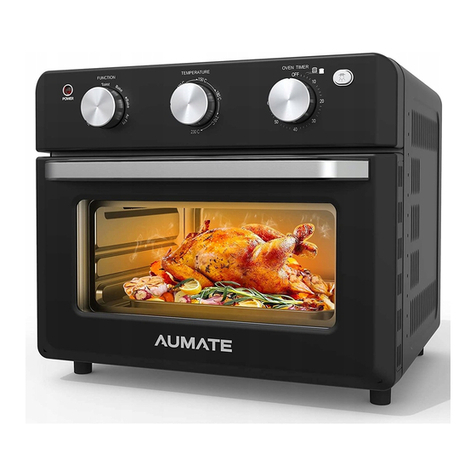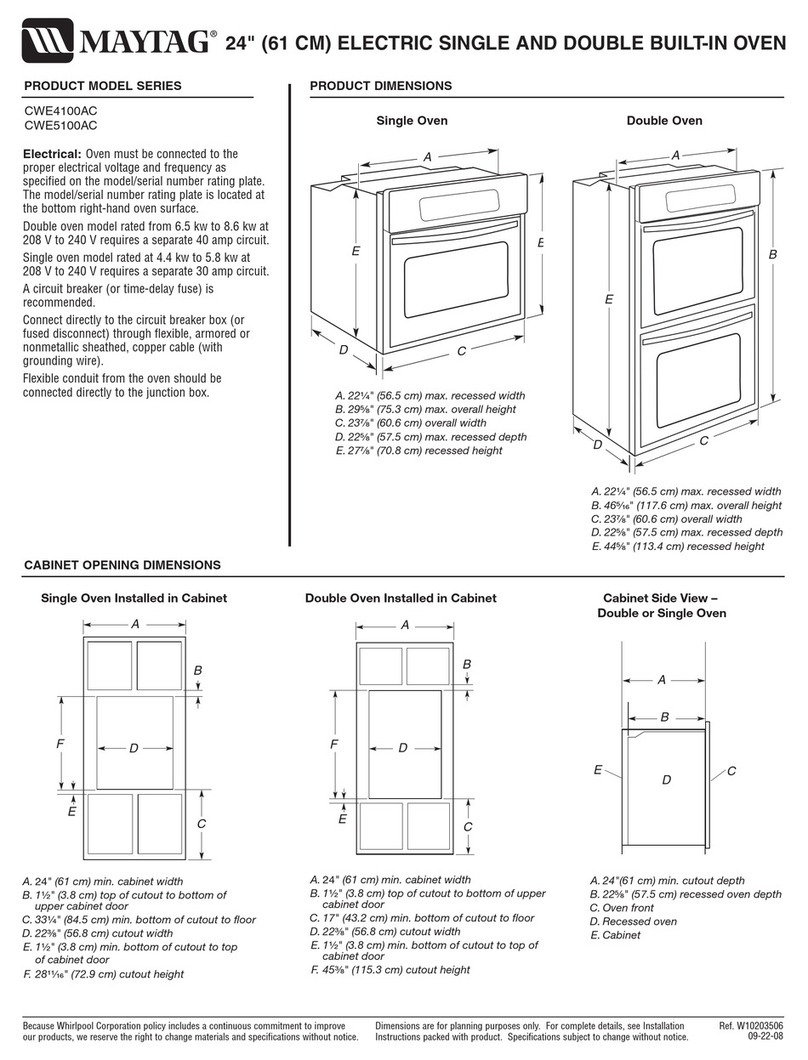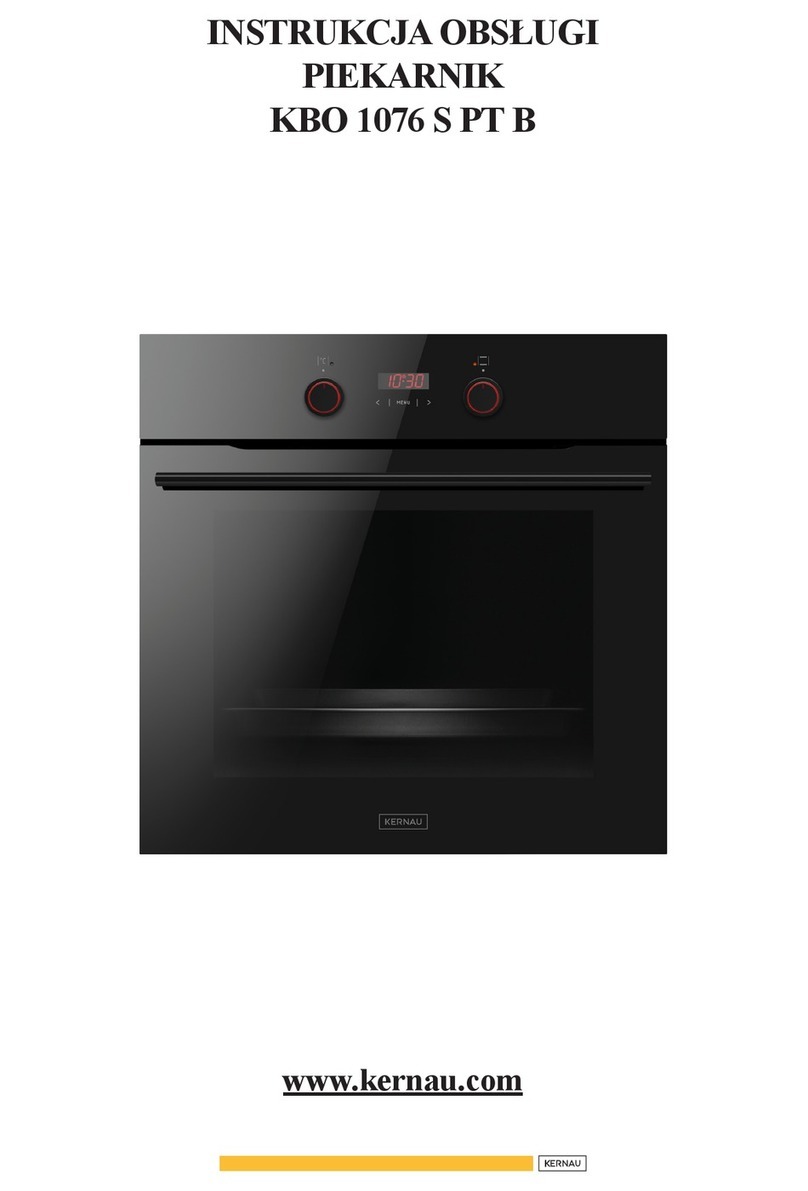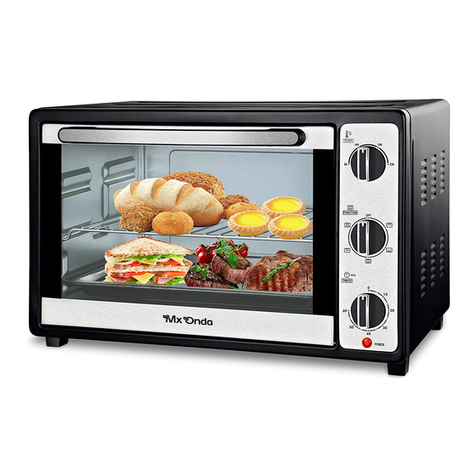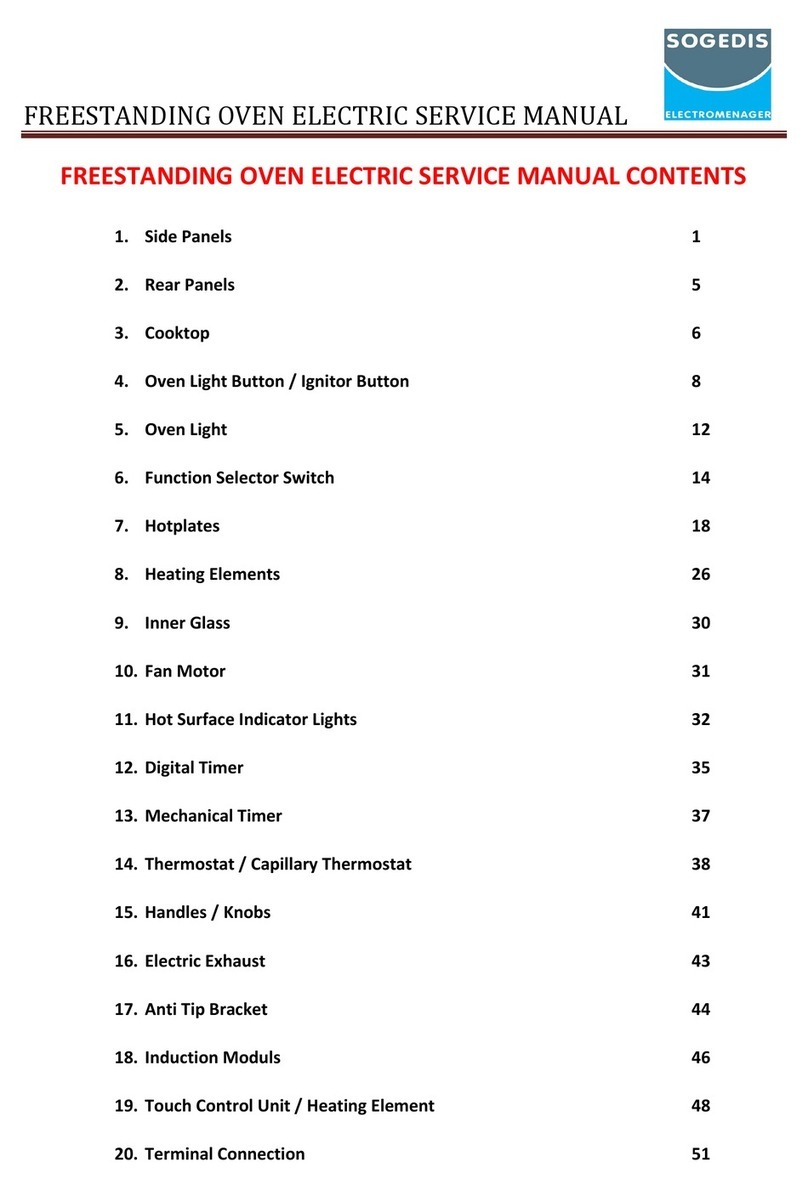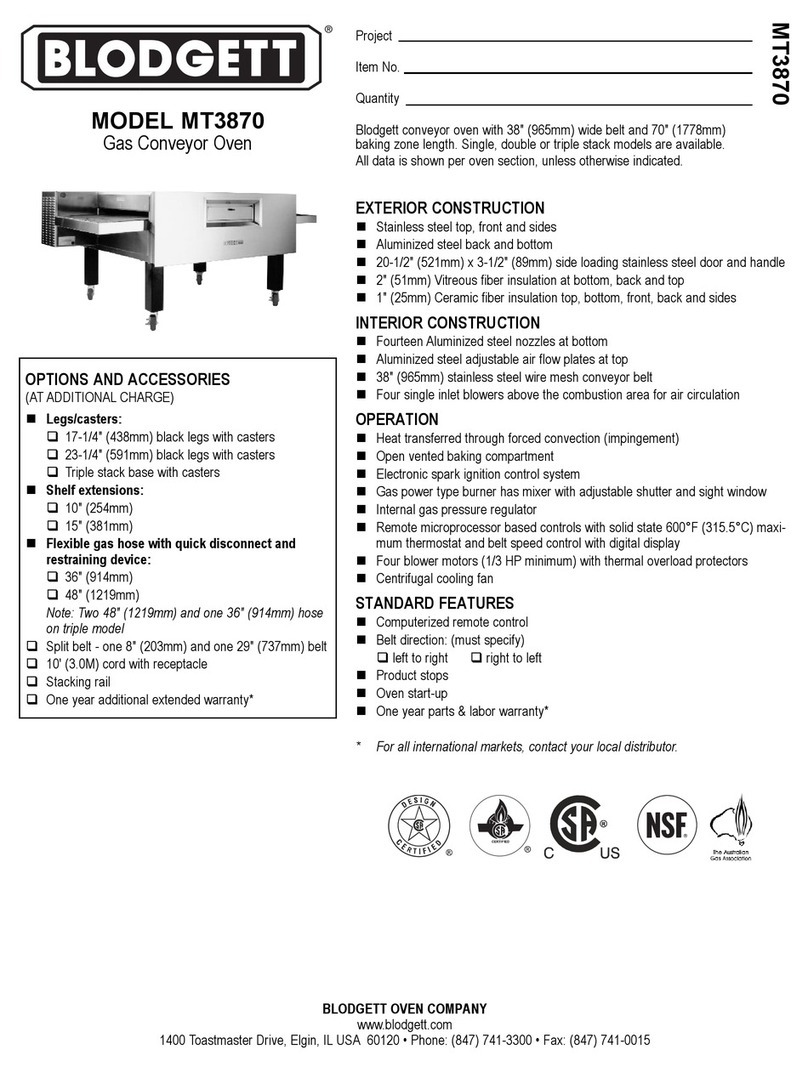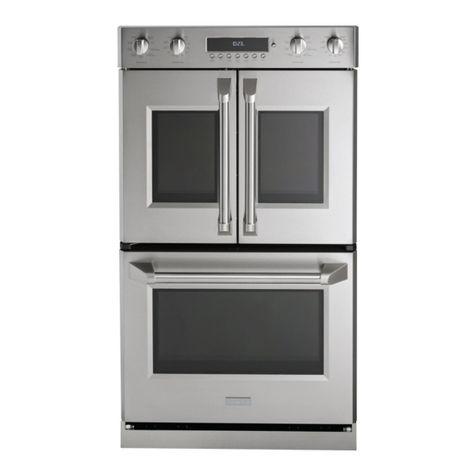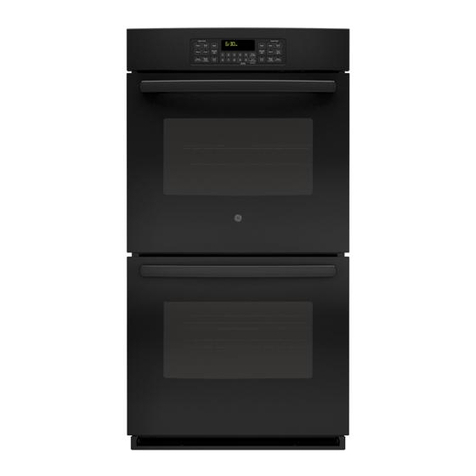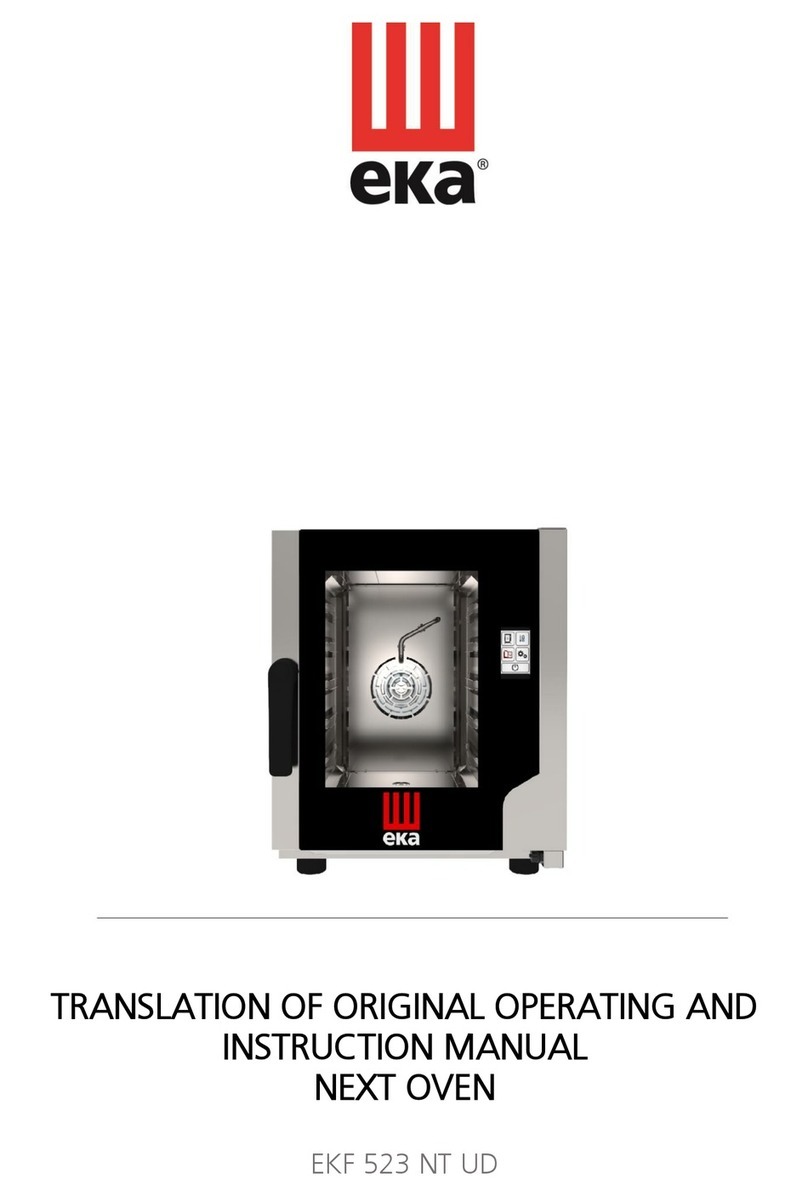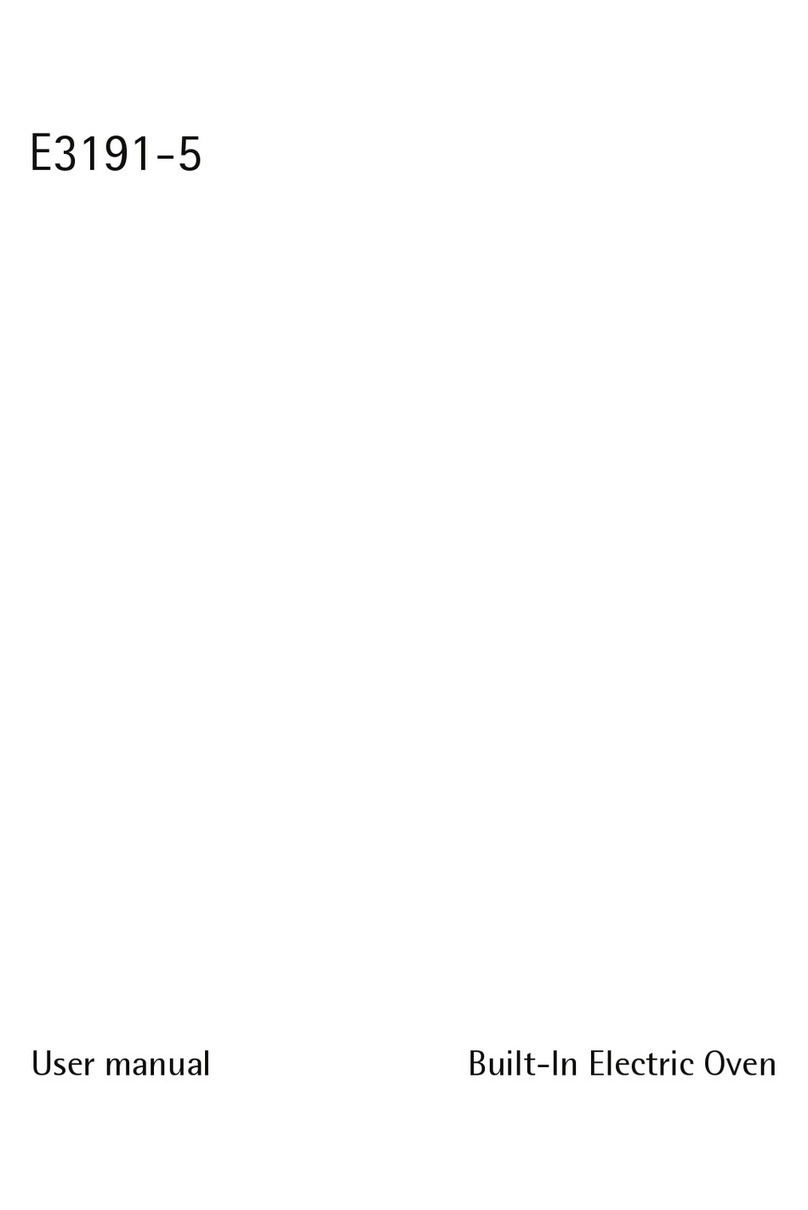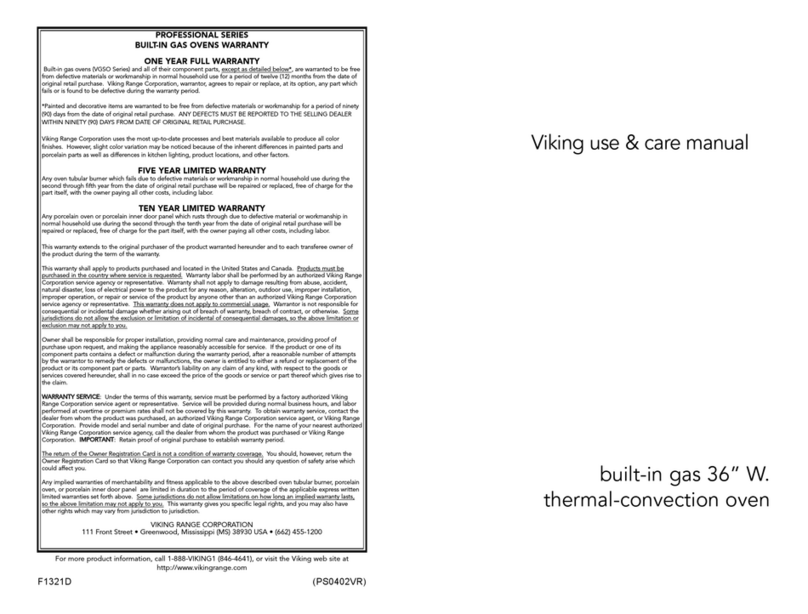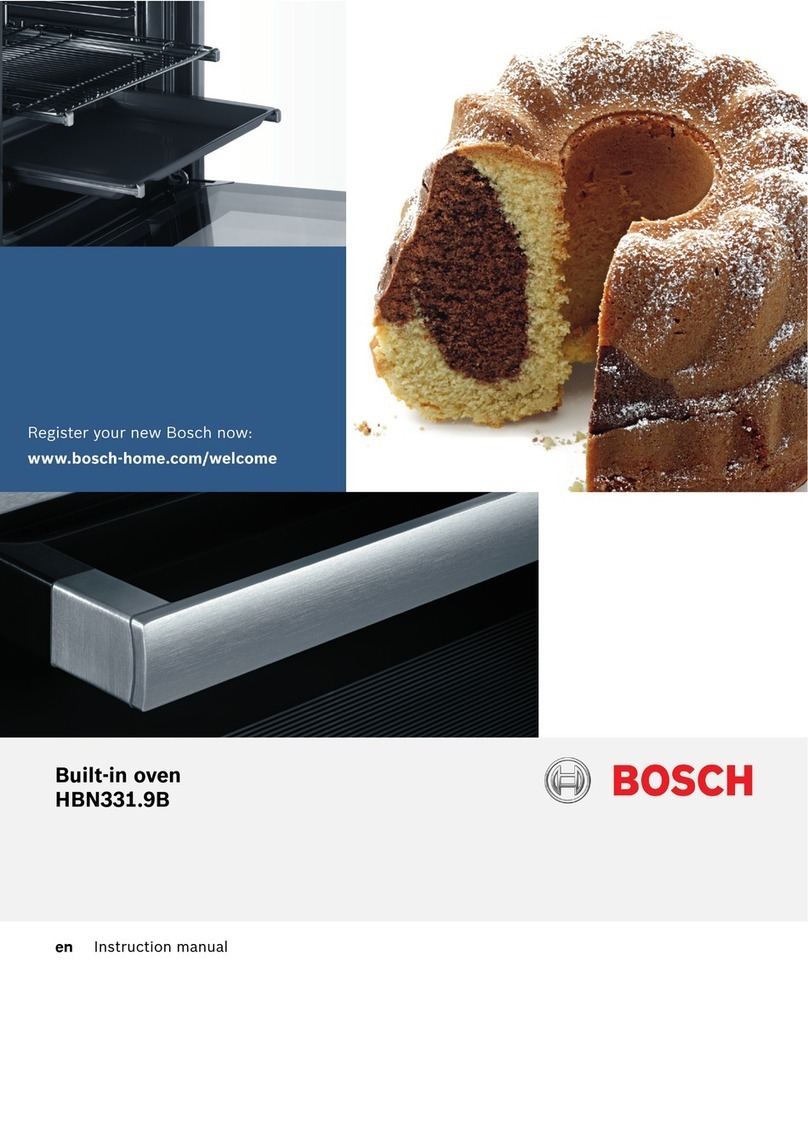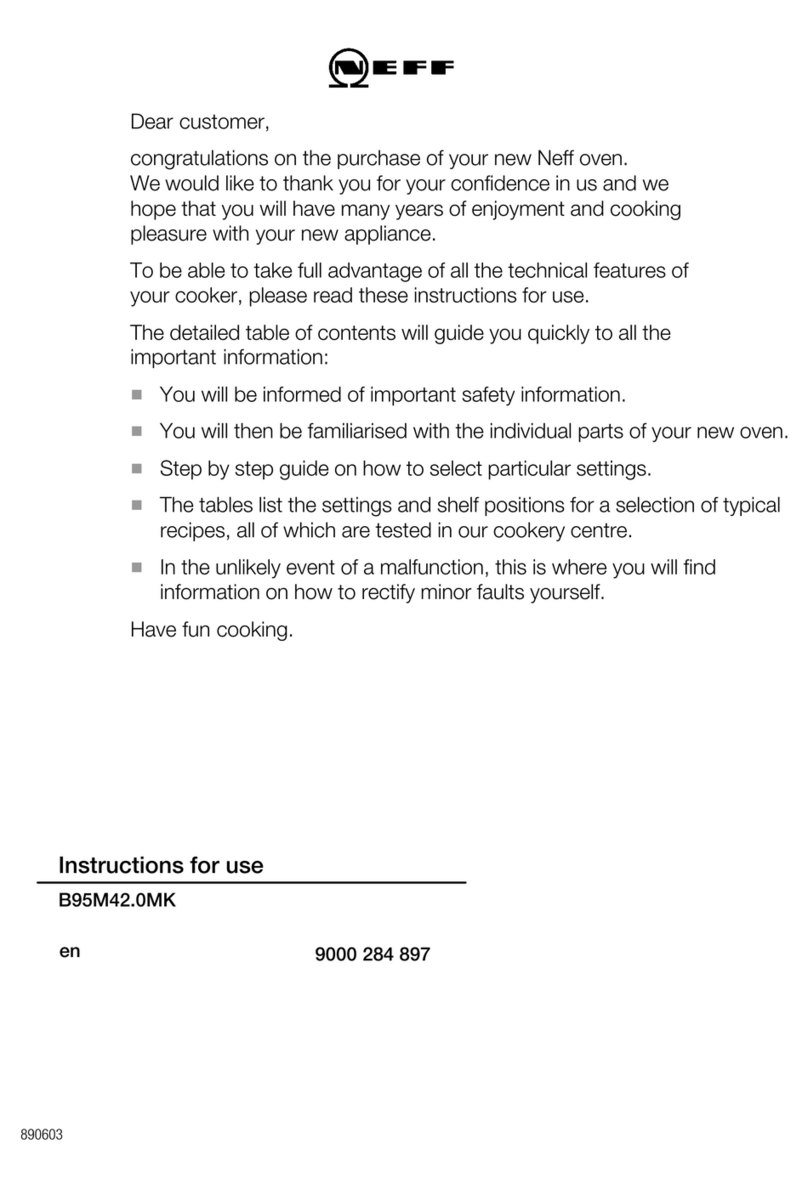
USINGTHE MANUAL
The user and maintenance manual forms an integral part of the oven and must be easily consulted
by operators and/or the qualied technician and/or maintenance staff so that the same can carry out correctly
and securely all the operations of installation, implementation, commissioning, dismantling and disposal of the
appliance. This user and maintenance manual contains all the information required for handling the unit with
particular attention to safety.
KEEPINGTHE MANUAL
The user and maintenance manual must be kept intact and in a safe place, protected from humid-
ity and heat, during the entire lifetime of the product, even in case of change of ownership to an-
other user, as it contains all the information for correct disposal and/or recycling of the appliance.
It must be stored in the immediate vicinity of the appliance in such a way as to make it easier to
consult. It is advisable to handle the manual with care to avoid damaging its contents. Do not remove, tear or
rewrite any parts of the manual.
THE MANUFACTURER RESERVES THE RIGHTTO
MAKETECHNICAL CHANGESTO
ITS PRODUCTSWITHOUT NOTICE.
INTRODUCTION
Original instructions
The “VULCAIN OVENS” has been constructed in respect of the overall community norms concerning the free circulation
of industrial and commercial products in EU countries.
Before proceeding with all the operations on the products,it is recommendable to read carefully the user’s manual
and maintenance.In addition,it is important to follow all the current regulations (loading-unloading,installation of the
product,electrical connections, positioning of the item, disposal of material).
Therefore, the units are supplied with all the documentation imposed by such standards.
The Company will not be held liable for any breakage, accidents or faults due to non-compliance, includ-
ing non-compliance for not following the instructions of this manual. The same applies to the carrying out of
modications, the exclusion of electrical safety devices or dismantling of the protections provided by the manufacturer,
which can seriously compromise the safety conditions, variations, and/or the installation of unauthorised accessories
or cases of neglect and all situations where the defect is caused by phenomena unrelated to the normal operation of
the product itself (weather, lightning, mains surges, irregular or insufcient power supply, etc.).
The maintenance requests easy operations, which can be carried out exclusively by specialized technician.

